Banana Slug
- April 1, 2024
- 0 comment
The banana slug, an intriguing creature native to the forests of North America’s Pacific Northwest, is a fascinating gastropod mollusk renowned for its vibrant yellow hue reminiscent of its namesake fruit. Measuring up to 10 inches in length, these slow-moving marvels play a crucial role in their ecosystems, serving as detritivores that help decompose organic matter, enrich soil fertility, and sustain vegetation growth. Despite their soft bodies, banana slugs possess remarkable defense mechanisms, including mucus secretion and camouflage, to fend off predators.

Their habitat ranges from temperate rainforests to coastal regions, where they contribute to nutrient cycling and maintain ecological balance. Revered in indigenous cultures for their resilience and adaptability, banana slugs symbolize harmony with nature and serve as subjects of folklore and traditional ceremonies. While not currently endangered, banana slugs face threats from habitat loss and environmental degradation, underscoring the importance of conservation efforts to safeguard their natural habitats and preserve biodiversity for future generations.
| Specification | Description |
|---|---|
| Scientific Name | Ariolimax |
| Size | Up to 10 inches in length |
| Color | Shades of yellow, green, or brown |
| Habitat | Temperate rainforests, wooded areas, coastal regions |
| Distribution | Pacific Northwest of North America, from Alaska to California |
| Diet | Decaying plant matter, fungi, algae |
| Reproduction | Clusters of translucent eggs laid in damp soil or leaf litter during mating season |
| Lifespan | Up to seven years in the wild |
| Defense Mechanisms | Mucus secretion, camouflage |
| Role in Ecosystem | Detritivores aiding in decomposition, soil enrichment, vegetation growth |
| Cultural Significance | Revered in indigenous cultures as symbols of resilience and adaptation |
| Conservation Status | Not currently endangered, but face threats from habitat loss and pollution |
What is Banana Slug?
Banana slugs, often hailed as nature’s slow-moving marvels, are fascinating creatures that inhabit diverse ecosystems across North America. From their vibrant appearance to their ecological importance, these mollusks captivate the curiosity of scientists and nature enthusiasts alike.
Banana slugs belong to the genus Ariolimax and are native to the dense forests of the Pacific Northwest. Despite their sluggish pace, these gastropods play a vital role in maintaining the balance of their ecosystems.
Physical Characteristics
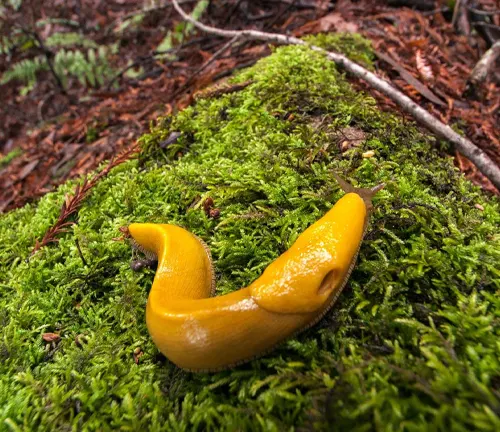
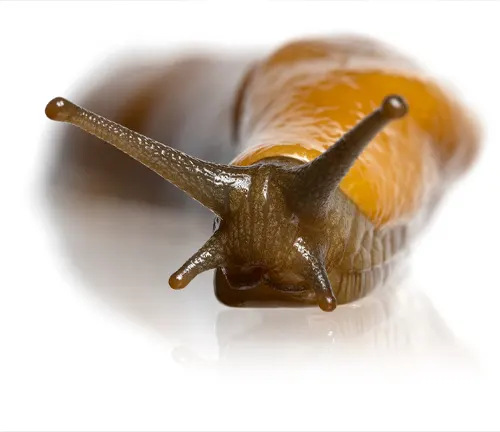
Banana slugs, are large gastropod mollusks known for their distinctive appearance. They typically measure up to 10 inches in length, making them one of the largest species of terrestrial slugs. One of the most striking features of banana slugs is their vibrant coloration, which ranges from shades of yellow to green or brown. Their bodies are soft and slimy, covered in a layer of mucus that aids in locomotion and moisture retention. Despite their soft exterior, banana slugs possess a muscular foot that enables them to move across various surfaces.
They have sensory tentacles on their heads, which they use to detect food and navigate their environment. Additionally, banana slugs may exhibit variations in color and patterning, influenced by factors such as genetics and environmental conditions. Overall, their unique physical characteristics make banana slugs fascinating subjects of study and observation in the natural world.
Habitat and Distribution


Banana slugs are primarily found in the temperate regions of North America, particularly along the western coast. They inhabit diverse ecosystems ranging from temperate rainforests to wooded areas and coastal regions. These slugs thrive in moist environments with ample vegetation and organic matter, which provide both food sources and shelter.
In terms of distribution, banana slugs are native to the Pacific Northwest of North America, spanning from Alaska down to California. They are commonly found in states such as Washington, Oregon, and California, where the climate is mild and conducive to their survival. Within their range, banana slugs can be found in a variety of habitats, including forests, parks, gardens, and even urban areas with suitable conditions.
Diet and Feeding Habits
Banana slugs are detritivores, meaning they primarily feed on decaying plant matter, fungi, and algae. They play a crucial role in ecosystem health by breaking down organic material and facilitating nutrient cycling. Their diet consists mainly of fallen leaves, rotting wood, and other decomposing vegetation found on the forest floor.
Banana slugs use their rasping mouthparts to scrape and ingest food particles from the surfaces of plants and soil. They have a voracious appetite and can consume large quantities of organic matter, contributing to the decomposition process and nutrient recycling within their habitats.
In addition to plant material, banana slugs may also feed on fungi and algae growing on damp surfaces. They are particularly fond of mushrooms and lichens, which provide additional sources of nutrients and moisture.
Reproduction
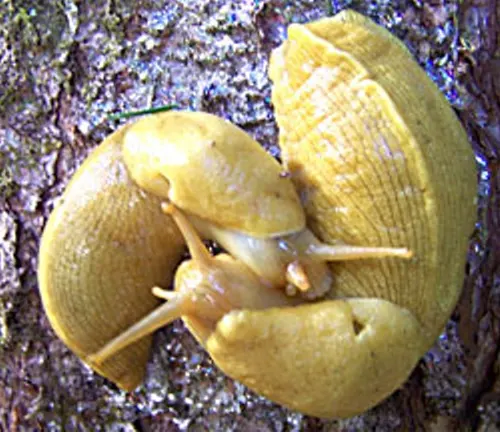

Reproduction in banana slugs involves a fascinating process that occurs during the mating season. These gastropods are hermaphrodites, meaning they possess both male and female reproductive organs.
During mating, banana slugs engage in elaborate courtship rituals, which can involve circular movements and the exchange of pheromones. These behaviors help to facilitate successful mating between individuals. Once mating is complete, banana slugs lay clusters of translucent eggs in damp soil or leaf litter.
The eggs are protected by a gelatinous substance secreted by the slugs, which helps to keep them moist and safe from predators. Over time, the eggs hatch into juvenile slugs, which undergo a period of growth and development before reaching maturity.
One interesting aspect of banana slug reproduction is their ability to store sperm from mating encounters. This allows them to fertilize their eggs at a later time, increasing the likelihood of successful reproduction even in the absence of immediate mating partners.
Predators and Defense Mechanisms
Banana slugs have several predators in their natural habitat, including birds, mammals, and some invertebrates. Despite their soft bodies, banana slugs have evolved various defense mechanisms to protect themselves. One of the most notable defenses is their ability to produce copious amounts of mucus, which serves multiple purposes. The slippery mucus makes it difficult for predators to grasp onto them, while also acting as a deterrent due to its unpleasant taste and odor.
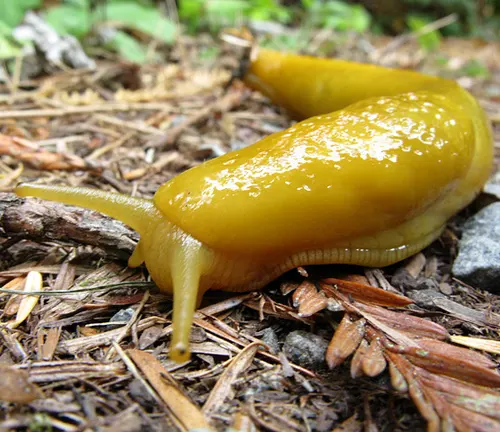
Additionally, banana slugs can retract into their shells for protection when threatened, and some species may exhibit warning coloration or mimicry to deter predators.
Ecological Role
Banana slugs play a crucial role in the ecosystem as detritivores. They primarily feed on decaying plant matter and fungi, helping to break down organic material and facilitate nutrient cycling. By consuming dead vegetation, banana slugs accelerate the decomposition process, releasing essential nutrients back into the soil. This process enriches the soil and promotes the growth of plants, which in turn supports the entire ecosystem. In this way, banana slugs contribute to the health and balance of their habitats.
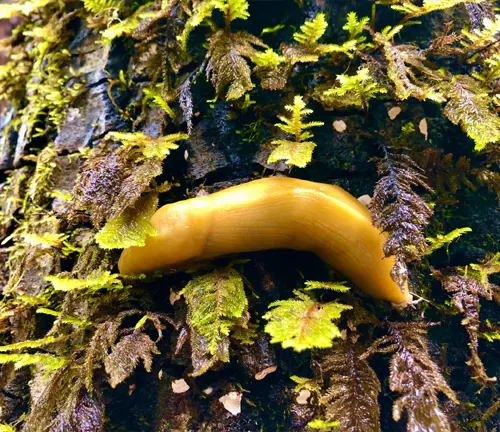
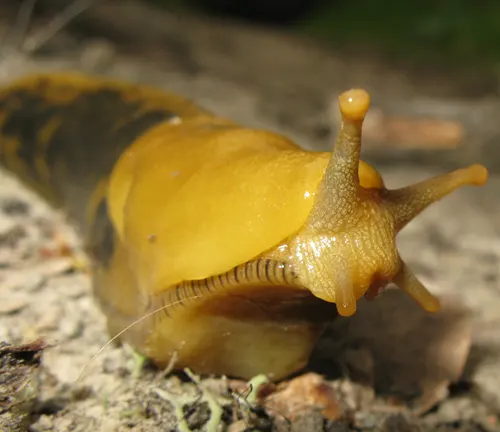
Cultural Significance
Banana slugs hold cultural significance in various indigenous cultures, particularly those native to the Pacific Northwest of North America where the slugs are commonly found. They are often revered as symbols of resilience, adaptability, and harmony with nature. In some traditions, banana slugs are incorporated into folklore, stories, and rituals as representations of the natural world and its interconnectedness with humans.
Additionally, banana slugs may hold spiritual or ceremonial importance in certain indigenous communities, where they are respected and honored as integral parts of the ecosystem.
Conservation Status
While banana slugs are not currently listed as endangered, they still face threats to their populations and habitats. Habitat loss, pollution, climate change, and human activities such as logging and urban development can negatively impact banana slug populations. Conservation efforts are focused on preserving their natural habitats, raising awareness about their ecological importance, and mitigating human-induced threats.
By protecting banana slugs and their habitats, conservationists aim to maintain biodiversity and ecosystem health for future generations.
Interesting Facts
- Banana slugs have a lifespan of up to seven years in the wild.
- They can produce over 100,000 offspring in a single breeding season.
- Some species of birds, mammals, and amphibians rely on banana slugs as a food source.
Research and Studies
Scientists continue to study banana slugs to uncover their role in ecosystems and their potential medicinal properties. Research efforts also aim to understand their behavior, reproduction, and interactions with other species, contributing to broader knowledge of biodiversity and ecology.
Human Interaction
Encounters with banana slugs often spark curiosity and wonder among hikers and nature enthusiasts. Educational programs and interpretive centers provide opportunities for people to learn more about these fascinating creatures and their habitats.
Banana Slugs in Popular Culture
Banana slugs have left their mark on popular culture, appearing in literature, art, and media. Their distinctive appearance and ecological significance make them compelling subjects for artistic expression and environmental storytelling, highlighting their role as ambassadors for biodiversity and conservation.
Different Species
Pacific Banana Slug
(Ariolimax columbianus)
Found along the Pacific coast of North America, ranging from Alaska to California. It is one of the largest species of banana slugs, typically measuring up to 10 inches in length.
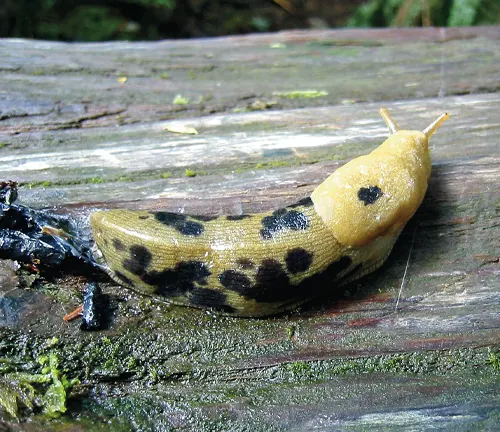
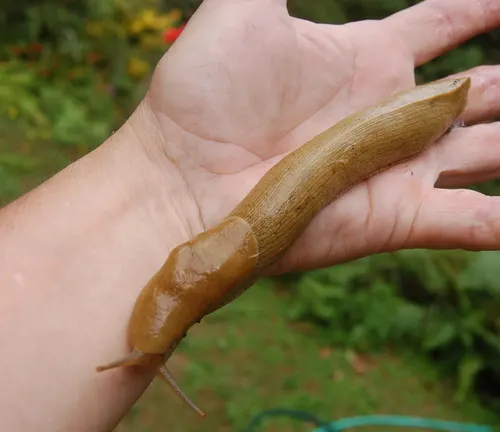
California Banana Slug
(Ariolimax californicus)
Endemic to California, this species exhibits similar characteristics to the Pacific banana slug but may vary slightly in coloration and size.
Redwood Banana Slug
(Ariolimax species)
Found in the redwood forests of Northern California, this species often displays variations in coloration, ranging from yellow to brown.
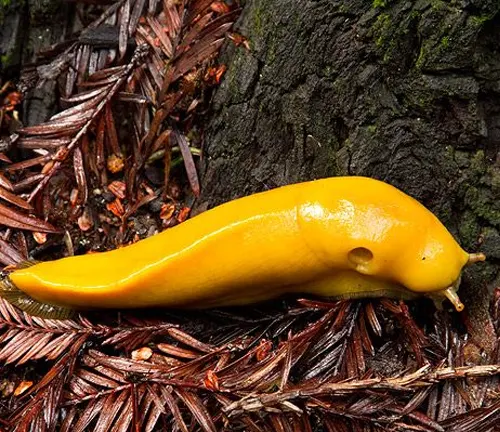
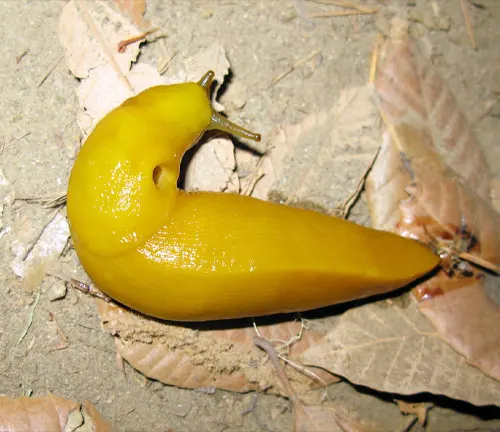
Santa Cruz Banana Slug
(Ariolimax dolichophallus)
Indigenous to the Santa Cruz Mountains in California, known for its elongated reproductive organs compared to other species.
Frequently Asked Questions (FAQs)
- Are banana slugs harmful to humans?
Banana slugs are harmless to humans and pose no threat. They are primarily detritivores, feeding on decaying plant matter and contributing to ecosystem health. - Where are banana slugs found?
Banana slugs are native to the Pacific Northwest of North America, ranging from Alaska to California. They inhabit moist environments such as temperate rainforests, wooded areas, and coastal regions. - What do banana slugs eat?
Banana slugs primarily feed on decaying plant matter, fungi, and algae. They play a crucial role in nutrient recycling by breaking down organic material and enriching the soil. - Do banana slugs have predators?
Yes, banana slugs have predators such as birds, mammals, and some invertebrates. They have developed defense mechanisms such as mucus secretion and camouflage to protect themselves from predation. - How do banana slugs reproduce?
Banana slugs engage in elaborate courtship rituals during the mating season, involving circular movements and the exchange of pheromones. After mating, they lay clusters of translucent eggs in damp soil or leaf litter. - Are there different species of banana slugs?
Yes, there are several species of banana slugs, each with its own unique characteristics and distribution. Some examples include the Pacific banana slug, California banana slug, and clouded banana slug. - What is the lifespan of a banana slug?
Banana slugs have a lifespan of up to seven years in the wild, although factors such as habitat conditions and predation may influence their longevity. - How can I help conserve banana slugs?
You can support conservation efforts by preserving natural habitats, reducing pollution, and raising awareness about the importance of biodiversity. Additionally, avoiding the use of harmful chemicals in gardening and landscaping can help protect banana slug populations. - Do banana slugs have any cultural significance?
Yes, banana slugs hold cultural significance in indigenous communities, where they are revered as symbols of resilience and adaptation. They feature prominently in folklore and traditional ceremonies, representing harmony with nature. - Can banana slugs survive in dry environments?
Banana slugs require moist habitats to thrive and are not well-suited to arid conditions. They rely on damp soil and leaf litter for moisture and shelter.


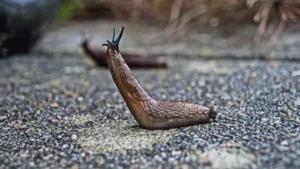
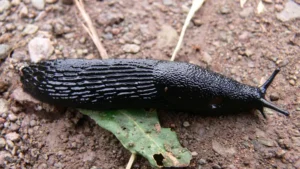
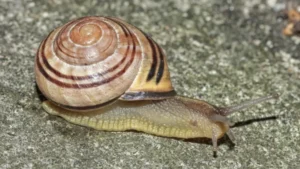
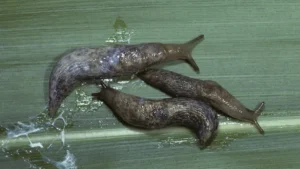
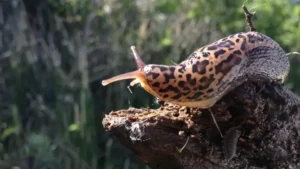
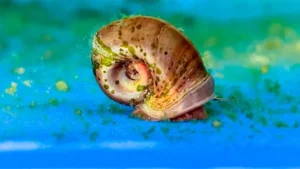

Leave your comment